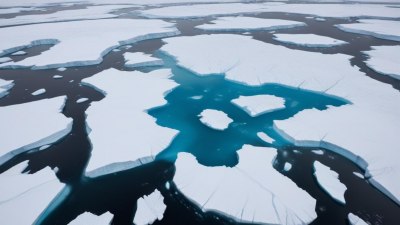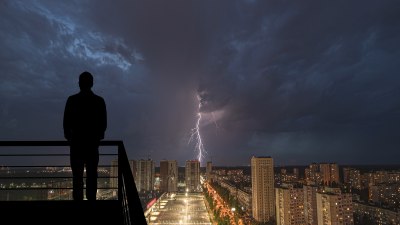What Causes the Sudden Waves of Warmth After the Chill
Explore the science behind sudden warm waves after chilly weather and their environmental impacts.

The experience of sudden warmth following a period of chill can often feel both surprising and delightful. It might seem like the changing temperatures are erratic, yet they follow specific scientific principles. Understanding these principles can provide insights into not just our weather patterns, but also the larger phenomena at play. In this article, we will explore the causes of these sudden waves of warmth after the chill, diving into the atmospheric dynamics, seasonal shifts, and various environmental factors that contribute to this intriguing weather pattern.
Atmospheric Pressure Changes
One of the primary causes of sudden warmth is the shift in atmospheric pressure. High-pressure systems are often associated with clear skies and stable weather conditions, whereas low-pressure systems are linked to clouds, precipitation, and turbulent weather. When a high-pressure system moves into an area, it can lead to a rapid warming effect.
This is particularly evident in transitional seasons like spring and autumn. In spring, for example, the sun’s rays become more direct as the Earth’s tilt changes, warming the air. If a high-pressure system then moves in, it can trap the warm air close to the surface, leading to a noticeable spike in temperatures. The stark contrast between the input of solar energy and the residual cold from previous weather creates a sensation of sudden warmth.
Temperature Inversions
Another phenomenon that can cause warm spells after a chilly period is temperature inversion. Under normal circumstances, air temperature decreases with altitude. However, during a temperature inversion, a layer of cooler air gets trapped near the ground under a layer of warmer air above. This situation can lead to fog and frost on the surface, but once the sun rises higher in the sky, it can quickly warm the trapped cold air, causing an abrupt change in temperature.
This can happen during summer as well; although people often associate inversions with wintertime chill, they can occur at any point in the year. The sudden warmth can feel strong and immediate, especially if one has been experiencing prolonged periods of colder weather.
Geographical Influences
Geographical features also play a significant role in temperature changes. Areas surrounded by mountains or bodies of water can experience sharp temperature differences. For instance, a mountain range can block cold air from moving into a valley. The valley might experience chilly weather while the mountains receive sunlight and warm air, leading to an abrupt change in temperature once the cold air dissipates.
Similarly, coastal areas may find their temperatures rapidly changing due to ocean currents. The Gulf Stream, for instance, brings warm water from the tropics toward the North Atlantic, affecting surrounding air temperatures. When a cold front passes over a coastal region that has experienced the warmth of these currents, it might create a rapid temperature fluctuation, leading to a brief wave of warmth.
Seasonal Changes
Seasonal transitions inherently cause fluctuations in temperature. Spring, for example, is notorious for its unpredictable weather patterns. As winter ends, the warming sun can lead to a sudden surge of warmer air as it interacts with residual cold temperatures, causing bursts of warmth. The changing tilt of the Earth itself causes a variation in solar intensity, contributing to these noticeable warm spells.
Likewise, fall can equally present surprises, particularly after a prolonged summer heatwave. A hastily arriving chill in the air may seem sudden, but it can quickly transition back to warmth, especially if weather patterns are still heavily influenced by residual heat from summer. The dynamics of the atmosphere are often a dance between the two extremes—heat and cold—creating these waves of temperature shifts.
Humidity and Its Effects
The humidity levels in the atmosphere can also impact temperature perceptions. Higher humidity can create a sensation of warmth even when temperatures are relatively mild. This is due to how our bodies perceive heat; we often feel warmer when the air is humid because the moisture limits our body's ability to cool off through evaporation of sweat.
When a cold front precedes a warm wave, the transition can lead to an increase in humidity. The shifting air masses can carry moisture from the ocean or other water bodies, enhancing the warm sensation. This is particularly true in regions closer to large bodies of water or during transitional seasons when the atmosphere starts holding more moisture.
Fronts and Weather Patterns
Cold fronts and warm fronts are critical components of weather systems and their interactions can lead to sudden temperature changes. A cold front typically pushes into a region with colder air, forcing warm air upwards, which can create storms. However, once the cold front passes, the warm air behind it can dominate, leading to a sudden spike in temperature.
This phenomenon can be quite pronounced in the spring. One day may be completely cold and overcast, and then within hours, the sun breaks through to reveal a beautifully warm day. These transitions can feel shocking and refreshing, demonstrating the power of atmospheric dynamics and the underlying science of temperature fluctuations.
El Niño and La Niña Effects
Climate phenomena such as El Niño and La Niña can significantly influence weather patterns around the world. El Niño, characterized by warmer ocean temperatures in the Pacific, can lead to changes in weather patterns that include warmer temperatures in parts of the Northern Hemisphere during winter. Conversely, La Niña brings colder temperatures but can still lead to sudden warmth in spring or fall as the atmosphere adjusts to these prolonged patterns.
The implications of these phenomena mean that beneath the surface of any sudden warmth after a chill may lie larger, more complex patterns influenced by oceanic and atmospheric interactions far removed from our immediate experiences.
Climate Change Considerations
In recent years, discussions surrounding climate change have brought attention to how warming trends can lead to unpredictable and extreme weather patterns. These environmental changes may contribute to the increasing frequency of sudden warmth following cold spells. Climate change is affecting the world’s temperature balance and disrupting long-standing weather patterns, potentially leading to more instances of abrupt temperature shifts.
As the overall climate warms, regions might experience increased variability, which means that sudden warm spells are becoming more commonplace. Understanding these shifts is essential for adaptation strategies aimed at responding to changing climate conditions.
The sudden waves of warmth after a chill are the result of numerous interrelated atmospheric and environmental factors. From shifts in pressure systems to geographical influences, the interplay of these elements creates the experience of sudden warmth. Understanding the dynamics behind these temperature changes not only enhances our appreciation for nature’s complexity but also prepares us for what lies ahead as our climate continues to evolve. As we embrace these warm spells, it's crucial to be mindful of the broader implications they represent within the context of our changing environment, ensuring we take steps towards sustainability and awareness of these phenomena.











